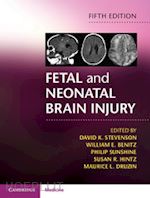David K. Stevenson is the Harold K. Faber Professor of Pediatrics and has held numerous leadership roles at Stanford University School of Medicine, California. He is currently the Senior Associate Dean for Maternal and Child Health, the Director of the Charles B. and Ann L. Johnson Center for Pregnancy and Newborn Services, the Co-Director of the Stanford Child Health Research Institute, and the Leader of Spectrum Child Health at Stanford University. Dr Stevenson has received many awards, including the Virginia Apgar Award, which is the highest award in Perinatal Pediatrics, and the Jonas Salk Award for Leadership in Prematurity Prevention from the March of Dimes Foundation. In recognition of his achievements, Dr Stevenson is a member of the National Academy of Medicine. He has served as the President of the American Pediatric Society and was co-founder of the California Association of Neonatologists (CAN) and the California Perinatal Quality Care Collaborative (CPQCC). Dr Stevenson has published over 540 articles on a wide range of scientific topics in neonatal-perinatal medicine. He is also the editor of several other textbooks, including the first edition of Neonatology: Clinical Practice and Procedures (2015), and numerous chapters in most of the major textbooks on neonatology.
William E. Benitz is a clinical investigator whose work centers on evidence assessment and decision analysis. Much of his work has related to early diagnosis, management, and prevention of neonatal infections, including a definitive assessment of C-reactive protein measurements in management of neonates with suspected sepsis and a decision analysis supporting recommendations for prevention of early-onset group B streptococcal sepsis. Other projects include evaluations of the efficacy of surfactant in congenital diaphragmatic hernia, the role of ancillary tests in diagnosis of candidal sepsis, and analyses of rapid tests for maternal group B streptococcal colonization. His analysis showing that routine early treatment to close the persistently patent ductus arteriosus in preterm infants does not improve outcomes for those infants has changed practice worldwide. The unifying thread within these studies is rigorous application of quantitative methods to assessment of evidence for practice, informed by an intimate familiarity with the practice of neonatal medicine, outstanding clinical expertise, and a well-honed habit of critical thinking. Dr Benitz has served as member and chair of the American Board of Pediatrics Sub-Board of Neonatal-Perinatal Medicine and on the American Academy of Pediatrics Committee on Drugs and Committee on the Fetus and Newborn.
Philip Sunshine's primary interests are in the areas of neonatal nutrition and developmental gastroenterology. The use of parenteral nutrition in very low birth weight infants, and the introduction of early enteral feeding to stimulate gastrointestinal maturation are specific areas of his investigative endeavors. In a career that has spanned over five decades, Dr Sunshine has authored numerous important publications, including those describing how lactose malabsorption can result from acute gastroenteritis, published in Pediatrics in 1964, fundamental contributions on intestinal disaccharides in an early report in Science, also in 1964. In another seminal paper, Dr Sunshine, along with his mentor, Norman Kretchmer, and Otakar Koldosky, described the cellular migration of intestinal epithelial cells in suckling and weaned rats. This Nature paper was the first to show that newborns had delayed cellular migration, effecting their capacity to recover from injury and digest disaccharidases. Dr Sunshine has received numerous honors throughout his career, including the Virginia Apgar Award in 2001. He is a member of many professional societies, including the American Pediatric Society. He served as Editor of the Neonatal-Perinatal Medicine exam from 1981 to 2001.
Susan R. Hintz, M.D., MS joined the Stanford University School of Medicine faculty in 2000 as Assistant Professor and was named the inaugural Robert L. Hess Family Endowed Professor in 2014. Dr Hintz is Associate Chief for Prenatal Services in the Division of Neonatal and Developmental Medicine, and co-Director for the Johnson Center for Pregnancy and Newborn Services at Lucile Packard Children's Hospital Stanford. Dr Hintz is a neonatologist and perinatal epidemiologist, whose investigative work focuses on understanding and improving morbidity and neurodevelopmental outcomes for extremely premature and high-risk infants, including the use of neuroimaging as a biomarker. Hintz serves as a principal investigator for neurodevelopmental follow-up in the Eunice Kennedy Shriver NICHD Neonatal Research Network. She is a leader in the CPQCC – CCS High-Risk Infant Follow-Up Initiative, spearheading creation of a California statewide framework for quality improvement processes from NICU discharge through early childhood. Dr











